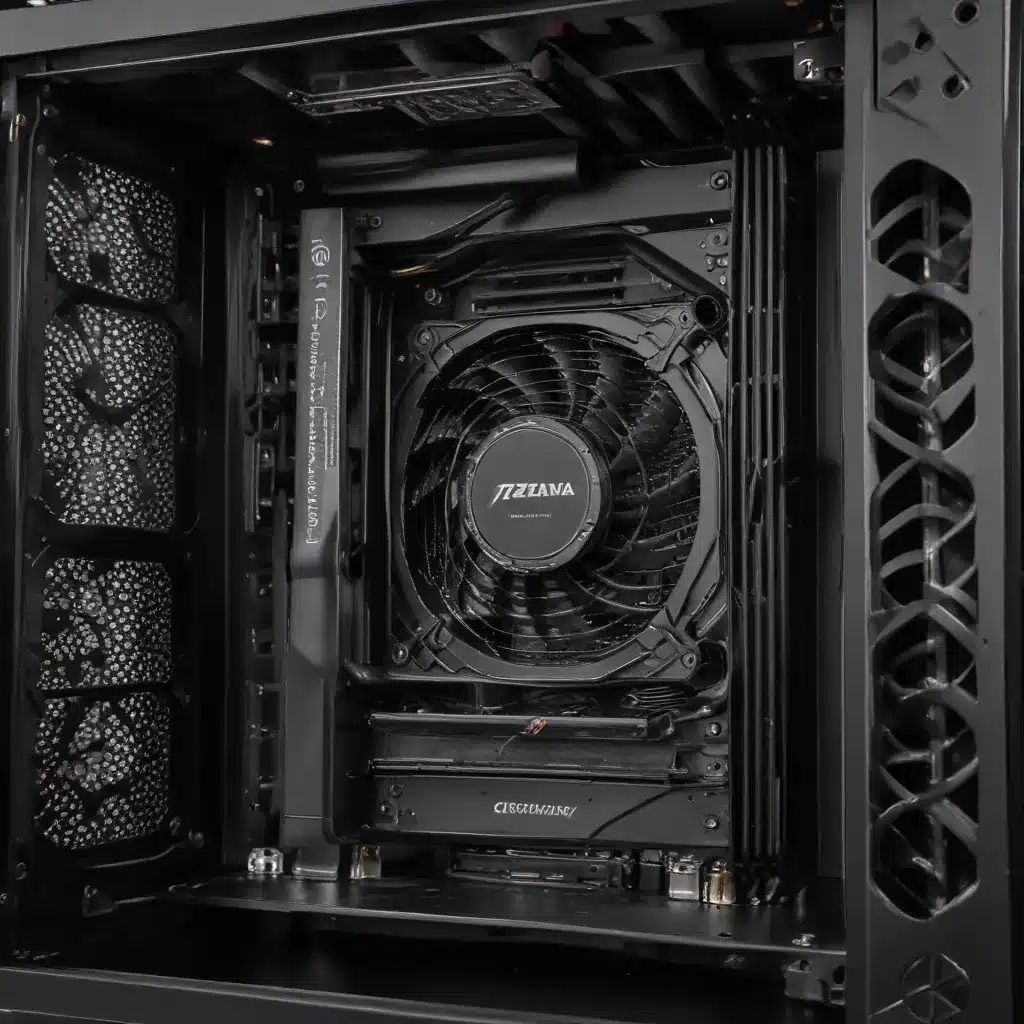
As an IT consultant with extensive experience in hardware troubleshooting and performance optimization, I’ve seen firsthand the importance of effective cooling and airflow management in desktop gaming rigs. Whether you’re an avid PC gamer or a hardware enthusiast, ensuring your system stays cool and well-ventilated is crucial for maintaining optimal performance and longevity.
In this comprehensive guide, we’ll dive deep into the world of airflow and cooling, exploring the various hardware components, cooling systems, and optimization techniques that can help you get the most out of your desktop gaming rig.
Hardware Components
The foundation of any high-performance gaming PC is its core hardware components. Let’s take a closer look at the key players that contribute to the overall thermal profile of your system.
Processor (CPU)
The central processing unit (CPU) is the heart of your gaming rig, responsible for executing the instructions that power your games and applications. As CPUs have become more powerful, they’ve also become increasingly heat-generating, making efficient cooling a top priority.
Graphics Processing Unit (GPU)
The graphics processing unit (GPU) is the workhorse of your gaming setup, handling the demanding graphics processing tasks required by modern games. GPUs can generate significant amounts of heat, especially under heavy load, making proper cooling essential.
Motherboard
The motherboard serves as the central hub for all your system components, including the CPU, GPU, and other peripherals. The design and layout of your motherboard can have a significant impact on airflow and cooling within your case.
Cooling System
Effectively managing the heat generated by your hardware is crucial for maintaining optimal performance and system longevity. Let’s explore the two primary cooling methods used in desktop gaming rigs.
Air Cooling
Air cooling is the most common and widely-used cooling solution for desktop PCs. It typically involves the use of one or more fans to draw in cool air and expel hot air from the case. Proper fan placement and case design are key to achieving effective air cooling.
Liquid Cooling
Liquid cooling, also known as water cooling, is a more advanced cooling solution that uses a closed-loop system of water or other coolant to transfer heat away from critical components, such as the CPU and GPU. Liquid cooling systems can provide superior cooling performance, but they require more complex installation and maintenance.
Airflow Management
Proper airflow management is the cornerstone of effective cooling in your desktop gaming rig. By optimizing the flow of air through your case, you can ensure that heat is efficiently dissipated and your components are kept within their optimal operating temperatures.
Case Design
The design of your computer case can have a significant impact on airflow and cooling. Look for cases with strategic fan placements, unobstructed air intake and exhaust, and features that promote efficient airflow, such as mesh panels or perforated front panels.
Fan Placement
The positioning and orientation of your case fans can make a big difference in how effectively they move air through your system. Experiment with different fan configurations, such as front intake, rear exhaust, and top/bottom ventilation, to find the optimal setup for your specific case and hardware.
Ventilation Optimization
In addition to fan placement, ensuring adequate ventilation throughout your case is crucial for effective cooling. Make sure there are no obstructions or blockages that could impede the flow of air, and consider adding additional vents or openings if necessary.
Power Supply
The power supply unit (PSU) is another critical component that can impact the overall thermal management of your desktop gaming rig.
Wattage Requirements
Choosing a PSU with sufficient wattage to power your system is essential. Underestimating your power needs can lead to system instability and overheating, so be sure to calculate your total power consumption and select a PSU accordingly.
Efficiency Ratings
PSU efficiency ratings, such as the 80 Plus certification, can also play a role in cooling. More efficient power supplies generate less heat, which can help reduce the overall thermal load on your system.
Thermal Monitoring
Keeping a close eye on the temperatures of your critical components is crucial for maintaining optimal cooling and performance.
Temperature Sensors
Most modern motherboards and components come equipped with built-in temperature sensors that allow you to monitor the real-time temperatures of your CPU, GPU, and other key components.
Fan Speed Control
Pairing your temperature monitoring with fan speed control can help you create a dynamic cooling system that responds to the changing thermal demands of your system. Many motherboards and system utilities offer advanced fan control options to fine-tune your cooling setup.
Performance Optimization
By combining the right hardware, cooling solutions, and airflow management techniques, you can unlock the full potential of your desktop gaming rig while ensuring it stays cool and efficient.
Component Overclocking
Carefully overclocking your CPU and GPU can provide a significant performance boost, but it also increases the thermal load on your system. Proper cooling is essential for maintaining the stability and longevity of your overclocked components.
Thermal Throttling Prevention
Thermal throttling is a safety mechanism that reduces component performance to prevent overheating. By optimizing your cooling setup, you can minimize the likelihood of thermal throttling and keep your system running at peak performance.
Airflow Optimization Techniques
Experiment with various airflow optimization techniques, such as adjusting fan speeds, improving cable management, and strategically placing components, to find the ideal balance between cooling and system performance.
Remember, the key to a well-cooled and high-performing desktop gaming rig lies in a comprehensive understanding of hardware, cooling systems, and airflow management. By following the tips and techniques outlined in this guide, you’ll be well on your way to achieving the ultimate in gaming performance and system longevity.
If you need further assistance with optimizing your desktop gaming rig or any other IT-related issues, feel free to visit our computer repair page for professional support and guidance.












